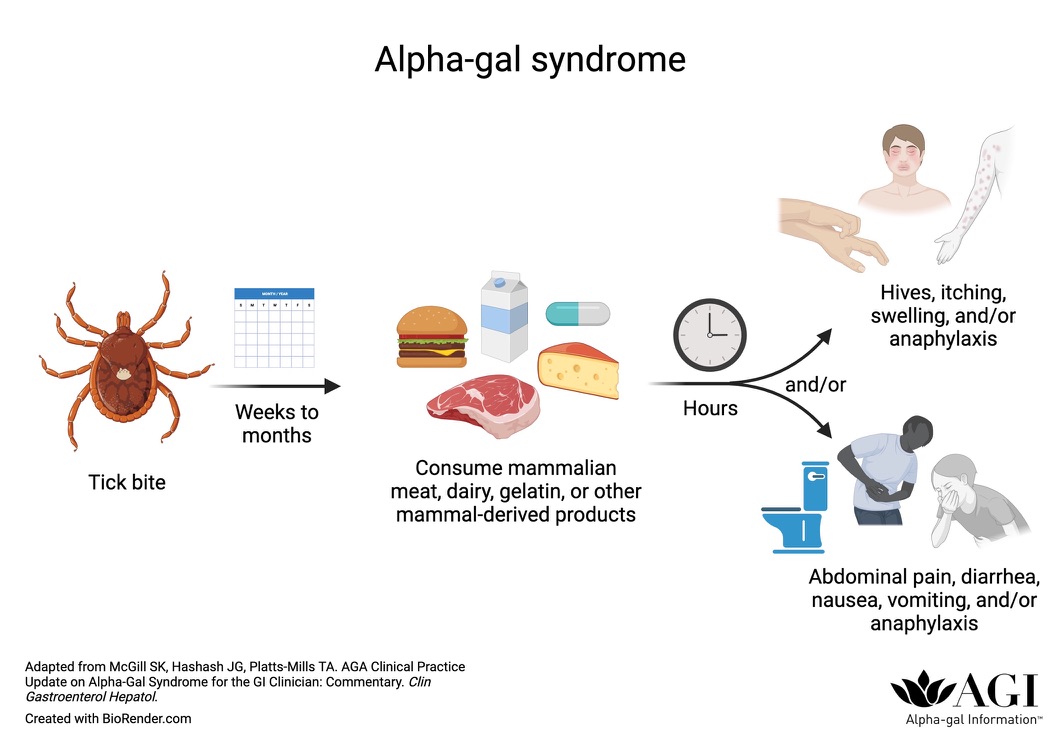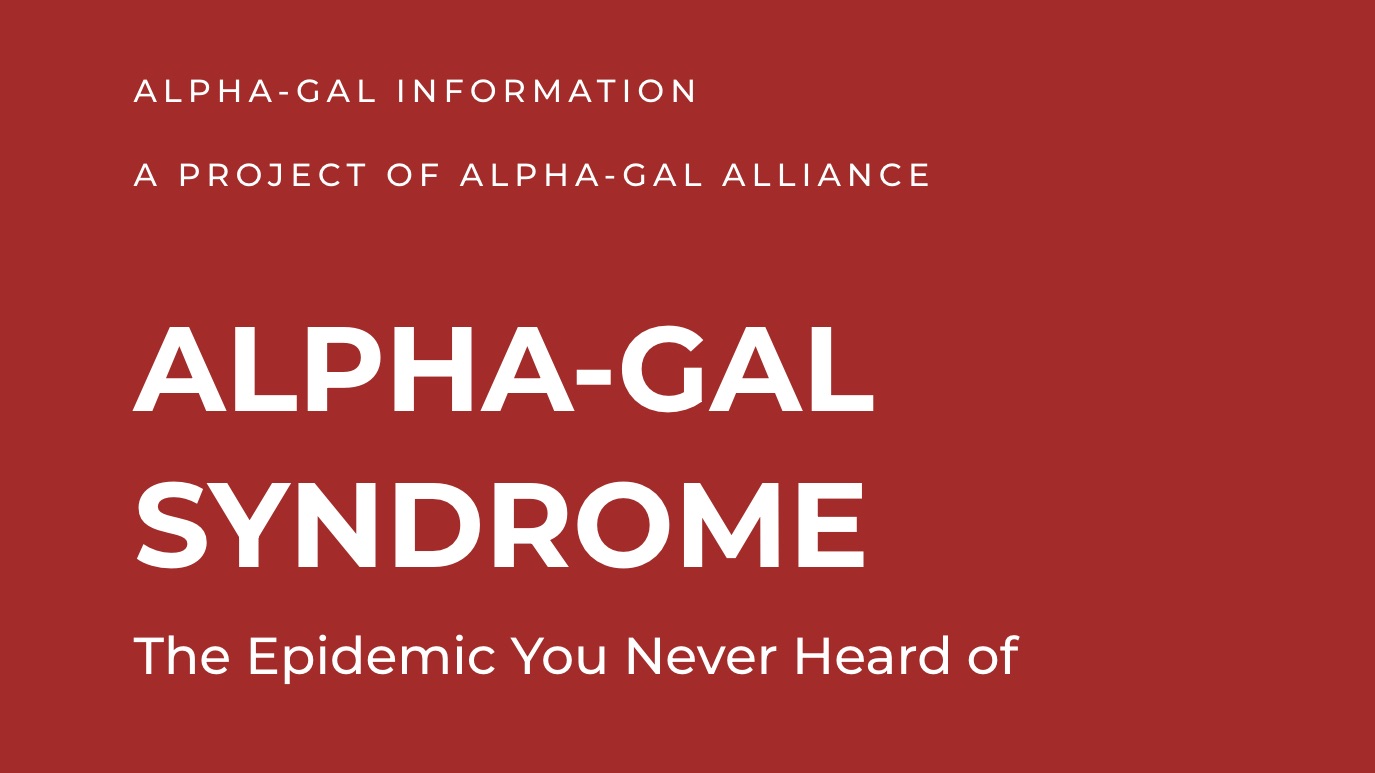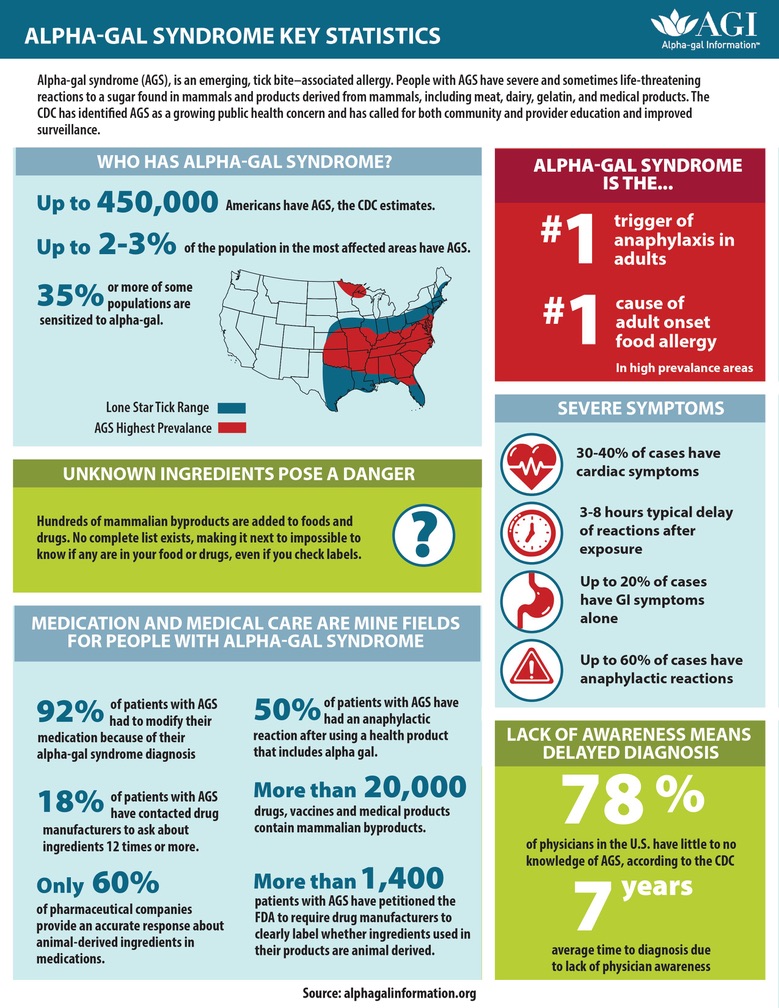
Advancing policy solutions to improve the lives of people with alpha-gal syndrome
Make a Donation
Join Our Movement
Alpha-gal syndrome
an allergy and a tick-borne condition
Alpha-gal syndrome (AGS) is a serious, sometimes life-threatening allergy to a sugar found in most mammals and products containing alpha-gal. More than 60% of people with AGS have life-threatening, anaphylactic reactions,1,2,3 and a number of fatalities have occurred.4,5,6
Alpha-gal syndrome (AGS) develops after tick bites.7,155 In the United States, most cases are associated with lone star ticks, which are most common in the southern, midwestern, and mid-Atlantic United States.8
Preliminary data suggests that other ticks found in the U.S. may also induce AGS, including black-legged ticks (Ixodes scapularis), Western black-legged ticks (Ixodes pacifica), Cayenne ticks (Amblyomma cajennense complex), and invasive Asian longhorned ticks (Haemaphysalis longicornis).149,150,151,152, 153,154

450,000 Americans
Up to 450,000 Americans have alpha-gal syndrome.8

10th most common food allergen
Alpha-gal syndrome is the 10th most common food allergen in the U.S.9

50% have severe reactions to medical products
50% of patients with AGS have had an anaphylactic reaction after using a health product that includes alpha-gal.10

More than 10 deaths
There are more than 10 confirmed deaths due to alpha-gal reactions to medical products alone.5

78% of providers
78% of providers know little or nothing about alpha-gal syndrome.11
Courtesy of Alpha-gal Information, an Alpha-gal Alliance project
2009 known cases
2017 estimated cases
2018 estimated cases
2022 estimated cases
A growing public health crisis
- The CDC has identified alpha-gal syndrome as a growing clinical and public health threat.8
- As lone star tick populations grow and their range expands, the number of alpha-gal syndrome cases grows, too.8,12
- According to the CDC, the number of new suspected cases of AGS is increasing by more than 15,000 a year.8
Tick-induced mammalian meat allergy (MMA) has increased exponentially on all six continents this century.
Our mission
Our mission is to advance policy solutions that improve the lives of people with alpha-gal syndrome.
How we work
We work in a scientifically-sound, collaborative, and bipartisan manner to serve the diverse community of those affected by alpha-gal syndrome.

Educate
Educate the public, decision-makers, and healthcare providers on key issues related to alpha-gal syndrome.

Collaborate
Collaborate with other organizations, experts, and those affected by AGS to develop and advocate for practical, effective policy solutions.

Mobilize
Mobilize the alpha-gal community to lobby lawmakers.

Advance
Advance the goals of the alpha-gal syndrome community by working with decision-makers.
Our areas of focus
Drugs & medical devices
Food
Education
Research & epidemiology
Prevention
Do you live in a high-prevalence area?
The estimated 450,000 cases of alpha-gal syndrome in the U.S. are NOT spread evenly over the whole country.8 They are concentrated in the southern, midwestern, and mid-Atlantic United States, particularly parts of Oklahoma, Kansas, Arkansas, Missouri, Mississippi, Tennessee, Kentucky, Illinois, Indiana, North Carolina, Virginia, Maryland, and Delaware, and Suffolk County, NY. Up to 3% of the population in the hardest-hit areas may be affected.8,13,14,15,18
Does your family live in a high prevalence area? What are your elected representatives doing about the alpha-gal syndrome crisis? Ask them!
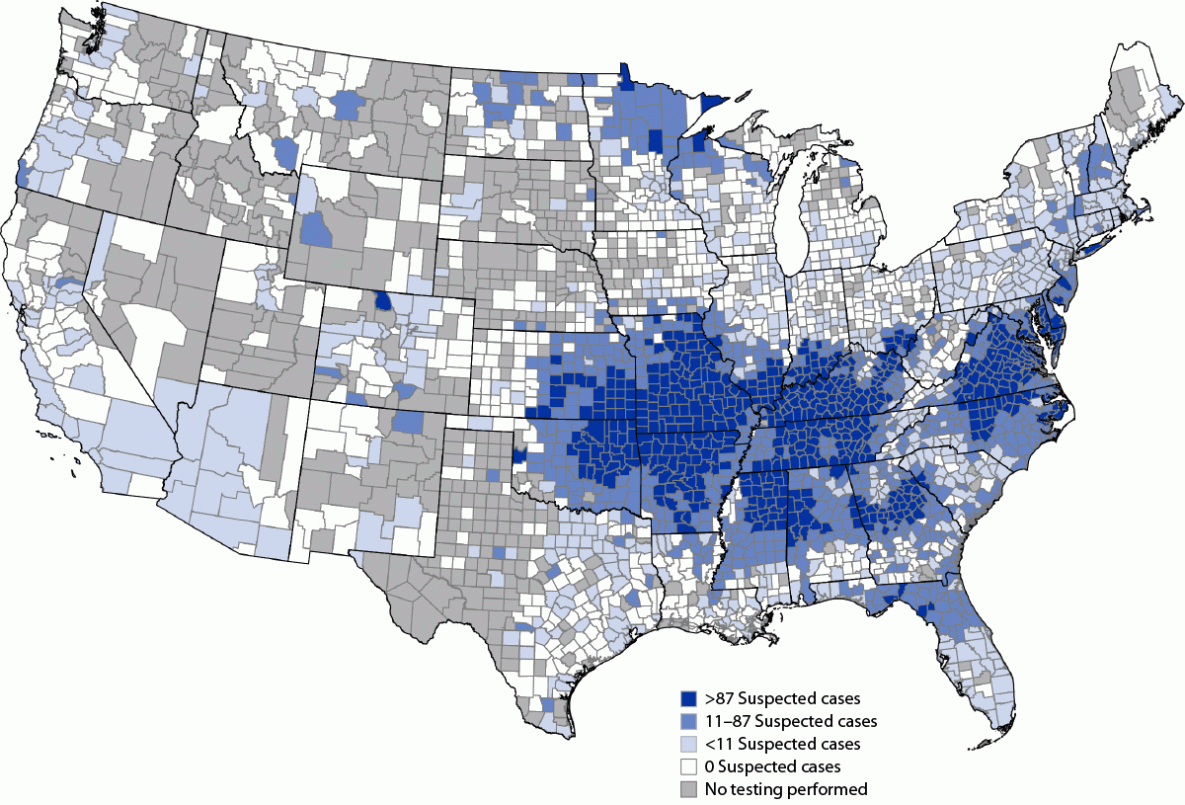
Key statistics for high-prevalence areas
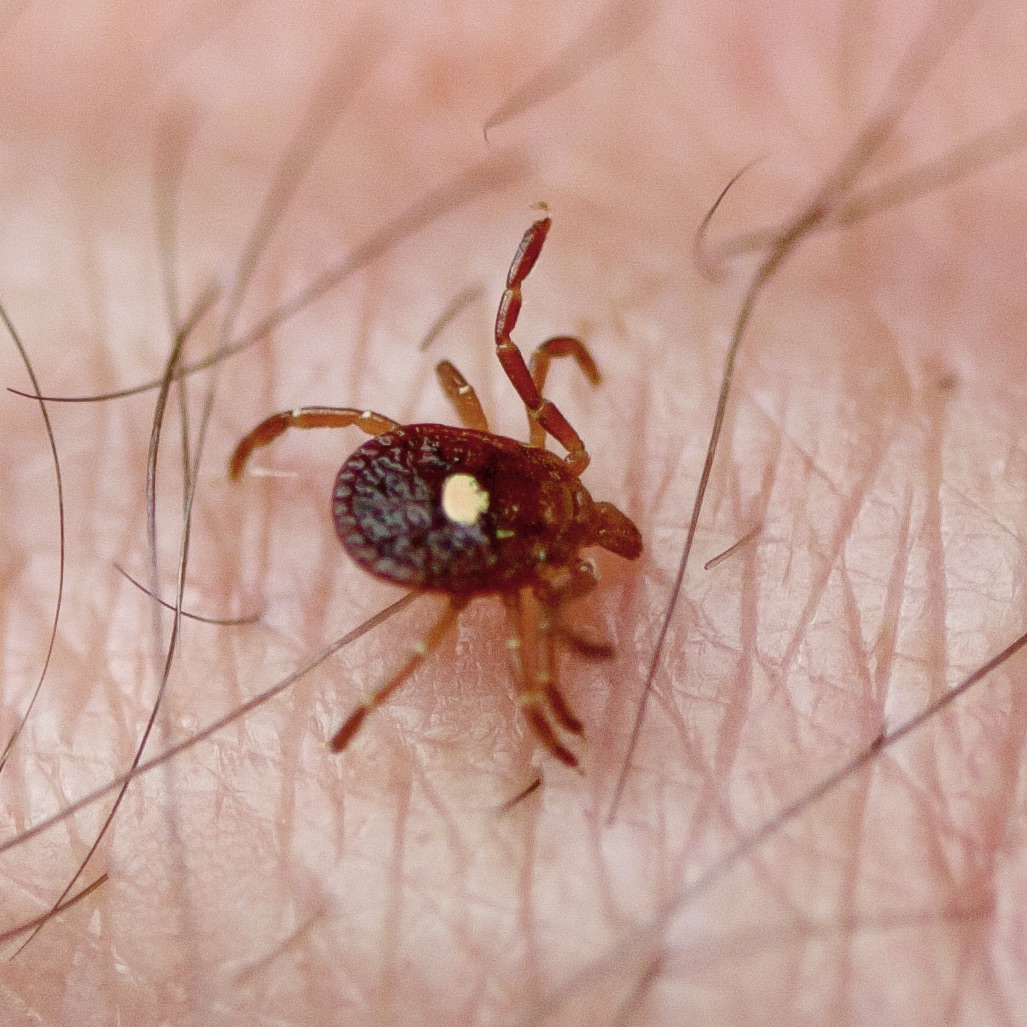
#1 tick-borne condition
Alpha-gal syndrome makes up the bulk of the tick-borne disease in states where lone star ticks are common.
Source: state health department statistics &CDC surveillance data

#1 cause of adult-onset allergy
Alpha-gal syndrome is the number one cause of adult-onset allergy in high-prevalence areas.16
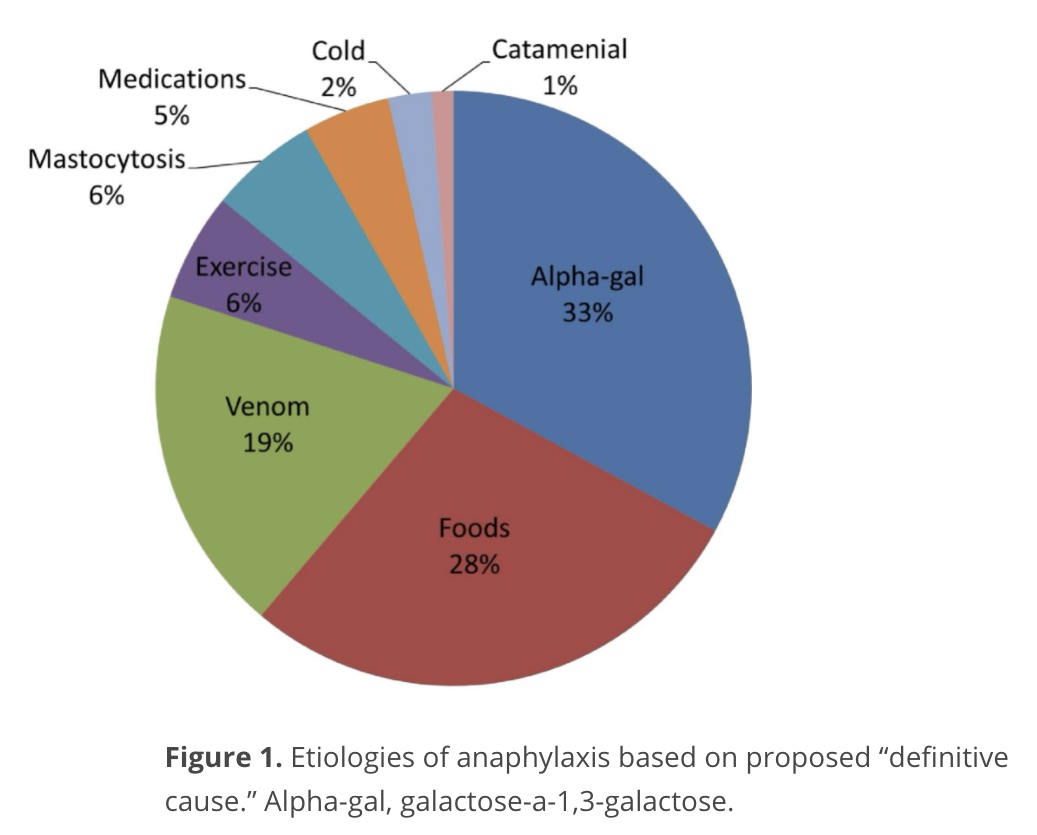
Cause of 33% of anaphylactic reactions
In one study of people aged 9 and older in a high-prevalence area, AGS accounted for a third of all cases of anaphylaxis, more than all other food allergies combined.17
Courtesy of Alpha-gal Information, an Alpha-gal Alliance project
Join our movement
Help make a brighter future for people with alpha-gal syndrome. Membership connects you to a network of allies, experts, and fellow alpha-gal advocates and gives you a voice in shaping the policies needed to improve the quality of life for those with AGS.

Donate
100% of donations are used for our advocacy work
Alpha-gal Alliance Action Fund is run by volunteers, and our board covers all of our operating expenses. 100% of your support will be used to mobilize the alpha-gal community, educate key decision-makers, and advocate for policy change.
Donate Now
Learn more about
alpha-gal syndrome
Alpha-gal Information
Learn more about alpha-gal syndrome at Alpha-gal Information (AGI), the most extensive resource on alpha-gal syndrome. AGI is a project of our sister organization, Alpha-gal Alliance.
What people are saying
Please send us your comments using the “Send Us a Message or Comment” form below.

